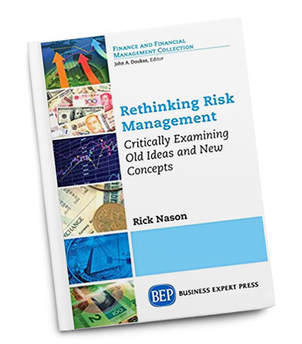Confusion abounds within the field of risk management. Helping us make better sense of the subject is a new book authored by Rick Nason. Read a review on Rethinking Reputational Risk by our guest columnist by Felix Kloman.

Nason sees the Achilles's heel of risk management as its over-focus on the negative. Many of us agree with him! For some years now, I have been a convert to the idea that we should learn to anticipate possible future surprises and developments, in order to deal with uncertainty more intelligently. But does simply "redefining” risk management to include both upside and downside developments do the trick? I have my doubts, and so do several of my compatriots. Could the flaw be the word 'risk" itself? For most human beings, the word undeniably connotes downside potential. I checked it in German, French, and Arabic: all negative! Only the Chinese seem to have a mixed view of the word, even if it doesn't exist in that language. My research says that it is "a point where things happen or change," or a “gamble", or an "adventure." You cite a misreading that I too succumbed to many years ago: the Chinese symbols mean a combination of "danger" and "opportunity." Not so, according to Google (but can we trust it?)

Nason also suggests that too many in risk management see things as either "simple" or "complicated," when, in fact most of what we face is "complex risk.” Given the acknowledged complexity of our lives and activities, isn't a major focus on neuroscience therefore dictated? Start with Daniel Kahneman's Thinking, Fast and Slow, and add the many newer addition to our learning about humans think and react. More recent works include Oliver Sacks' The River of Consciousness (2017) and Edward O. Wilson's The Origins of Creativity (2017).
Additionally, Nason slams all these convoluted "frameworks" offered by consulting firms. Sheer cacophony! Frameworks are indeed "bloated bureaucracies." They are often misleading, but they are entirely human! For a refreshing slant, I suggest a reread of Sellers and Yeatman's 1066 and All That (1930), in which the authors define events in English history as either "good things" or "bad things".
Finally, I do agree with Nason’s recommendation that to manage risk, you must “ask your own questions." In sum, Nason’s book is a refreshing challenge to almost everything we think we've learned in "risk management” over the past fifty years!


 RSS Feed
RSS Feed